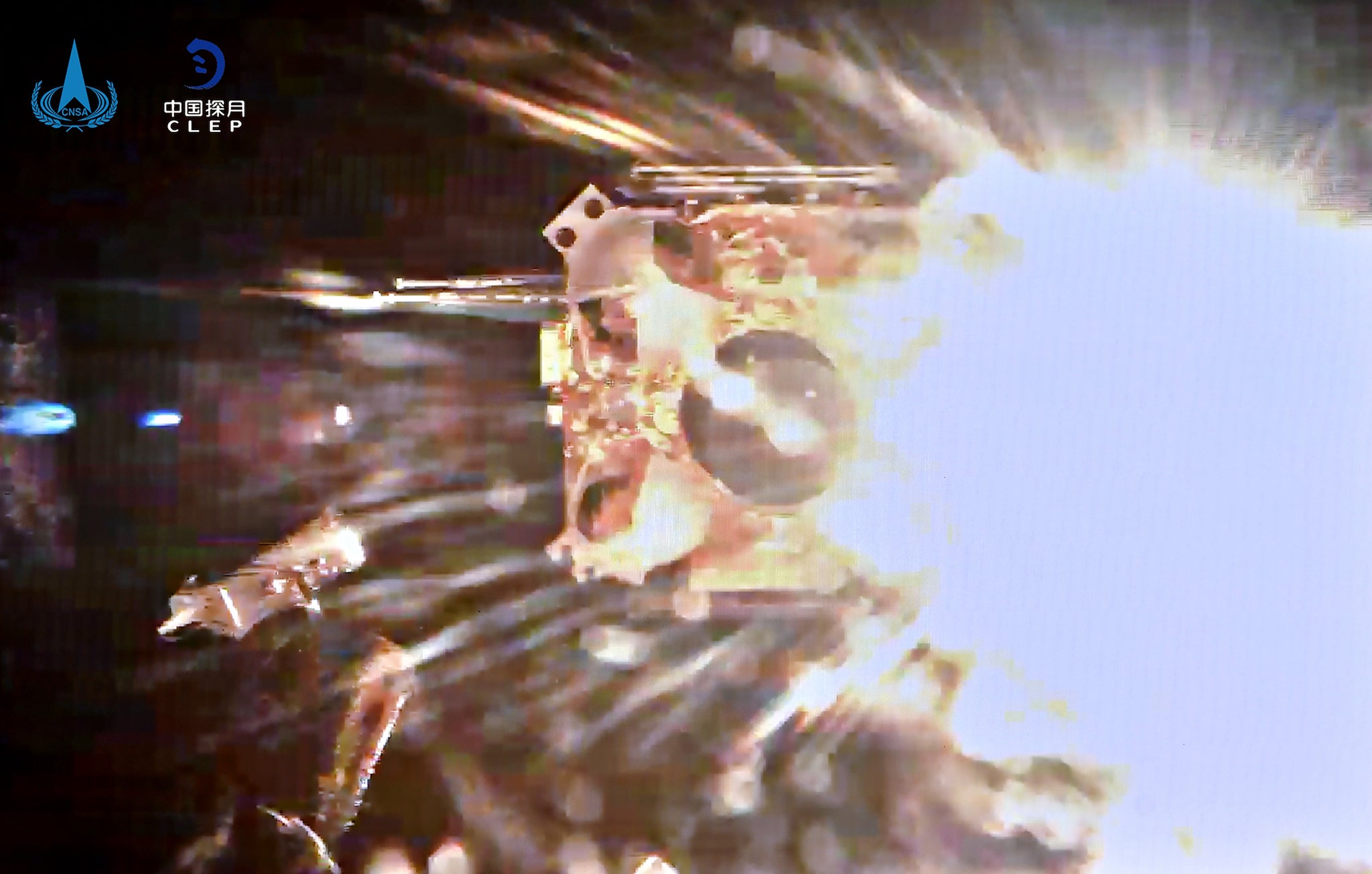Chinese spacecraft leaves the Moon carrying pieces of lunar surface

Your support helps us to tell the story
From reproductive rights to climate change to Big Tech, The Independent is on the ground when the story is developing. Whether it's investigating the financials of Elon Musk's pro-Trump PAC or producing our latest documentary, 'The A Word', which shines a light on the American women fighting for reproductive rights, we know how important it is to parse out the facts from the messaging.
At such a critical moment in US history, we need reporters on the ground. Your donation allows us to keep sending journalists to speak to both sides of the story.
The Independent is trusted by Americans across the entire political spectrum. And unlike many other quality news outlets, we choose not to lock Americans out of our reporting and analysis with paywalls. We believe quality journalism should be available to everyone, paid for by those who can afford it.
Your support makes all the difference.A Chinese spacecraft has set off back from the Moon, carrying pieces of its surface.
It will be the first time that lunar rocks have been brought back to Earth in decades, and marks a major breakthrough in China’s mission to take people to the Moon and travel further into the solar system.
The government space agency said that the Chang’e 5 craft had successfully lifted off from the lunar surface, after arriving on Tuesday.
It was the third Chinese spacecraft to land on the Moon, but the first time the country has taken back off its surface again.
Its mission was to collect about 2kg (4lbs) of lunar rocks and bring them back to Earth, the first return of samples since Soviet spacecraft did so in the 1970s.
Earlier, the US Apollo astronauts brought back hundreds of pounds of moon rocks.
The landing site is near a formation called the Mons Rumker and may contain rocks billions of years younger than those retrieved earlier.
The ascent vehicle lifted off from the moon shortly after 11pm Beijing time Thursday (1500 GMT) and was due to rendezvous with a return vehicle in lunar orbit, then transfer the samples to a capsule, according to the China National Space Administration.
The moon rocks and debris were sealed inside a special canister to avoid contamination.
It was not clear when the linkup would occur. After the transfer, the ascent module would be ejected and the capsule would remain in lunar orbit for about a week, awaiting the optimal time to make the trip back to Earth.
Chinese officials have said the capsule with the samples is due to land on Earth around the middle of the month.
Touchdown is planned for the grasslands of Inner Mongolia, where China's astronauts have made their return in Shenzhou spacecraft.
Chang'e 5's lander, which remained on the moon, was capable of scooping samples from the surface and drilling two metres.
While retrieving samples was its main task, the lander was also equipped to extensively photograph the area, map conditions below the surface with ground-penetrating radar and analyse the lunar soil for minerals and water content.
Right before the ascent vehicle lifted off, the lander unfurled what the space administration called the first free-standing Chinese flag on the moon.
The agency posted an image, apparently taken from the lander, of the ascend vehicle firing its engines as it took off.
Chang'e 5 has revived talk of China one day sending astronauts to the moon and possibly building a scientific base there, although no timeline has been proposed for such projects.
China launched its first temporary orbiting laboratory in 2011 and a second in 2016. Plans call for a permanent space station after 2022, possibly to be serviced by a reusable space plane.
While China is boosting co-operation with the European Space Agency and others, interactions with Nasa are severely limited by US concerns over the secretive nature and close military links of the Chinese programme.
Additional reporting by Press Association

Join our commenting forum
Join thought-provoking conversations, follow other Independent readers and see their replies
Comments